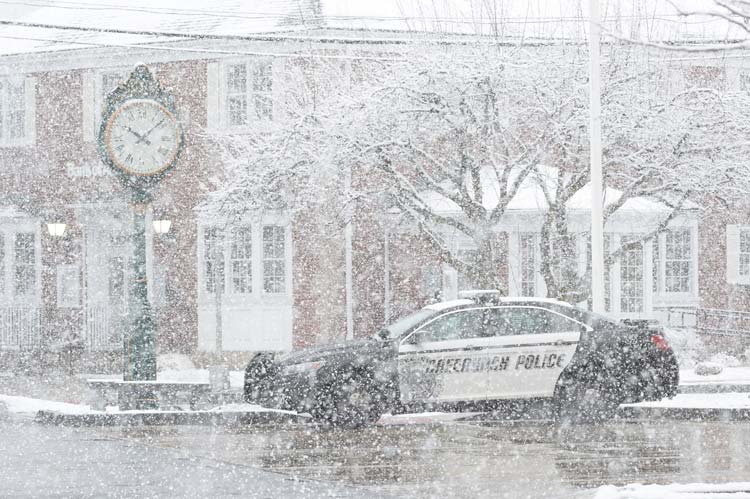
By Kate Dzikiewicz
Whether large or small, property development projects in Greenwich often result in tree removal. Most of these projects now include robust planting plans to replace lost trees, and native species are chosen more often than they were in years past. It is wonderful to see urban planning and development including more environmental and ecological components, but the trend of removing mature trees and replanting young ones represents a significant blind spot. The beneficial local impact of a mature tree takes decades to achieve, and no number of saplings can replace that.
A mature tree has an extensive canopy and innumerable leaves. This makes them very effective at reducing airborne pollutants in an urban area, such as particulate matter, ozone, sulfur dioxide, carbon monoxide, and nitrogen monoxide. Some of these pollutants are absorbed by the tree and transformed into less harmful substances while others adhere to the leaves and bark of a tree and are washed away by rain. Research has shown that a tree with a 30-inch diameter trunk has around 100 times more leaf surface area than a 6-inch tree, allowing it to remove 10 times more air pollution. Most trees are planted in the 1.5 – 3-inch range, making them even less effective at cleaning the air.
Mature trees also help mitigate the urban heat island effect. Paved surfaces exposed to full sun can be 20-40 degrees hotter than shaded areas and have ambient air temperatures up to 9 degrees warmer. Large trees with wide canopies block sunlight and cool streets and buildings. The process of a tree drawing water from the soil and releasing it as vapor into the air provides even more evaporative cooling. Home and business owners experience much lower energy expenses in summer if they have large trees shading their property.
Shade cast by trees also preserves our local infrastructure. The sun’s ultraviolet rays degrade asphalt over time and makes roads brittle and prone to damage. Street trees prevent this damage and reduce road resurfacing costs by 15-60%, depending on the level of canopy coverage.
Another way that trees help our infrastructure is by diminishing stormwater runoff. Greenwich experienced a particularly rainy spring this year and we can expect increasing weather variability in the years to come. Trees help manage stormwater by improving soil permeability and absorbing water through their roots. Mature trees are about three times more effective than young trees at reducing water runoff thanks to their extensive root systems and broad canopies that slow rainfall before it reaches the ground.
Across nearly every environmental metric, mature trees deliver significantly more benefits than their younger counterparts, which take decades to reach the same size and impact. The removal of mature trees needs to be recognized as a generational loss to a community and avoided whenever possible for that reason. These trees represent the investment of many decades of patience and care which can only be replaced by an equal amount of time and attention. It may be easier to remove large trees during construction and plant new ones afterward, but with careful planning trees can often be preserved, even next to active building sites!
To protect the health of our community, reduce energy costs, and maintain a resilient environment, it is essential that we prioritize the preservation of mature trees in our urban landscapes.
Kate Dzikiewicz
Executive Director, Greenwich Tree Conservancy
To find out more about the Greenwich Tree Conservancy, visit us at: www.greenwichtreeconservancy.org




